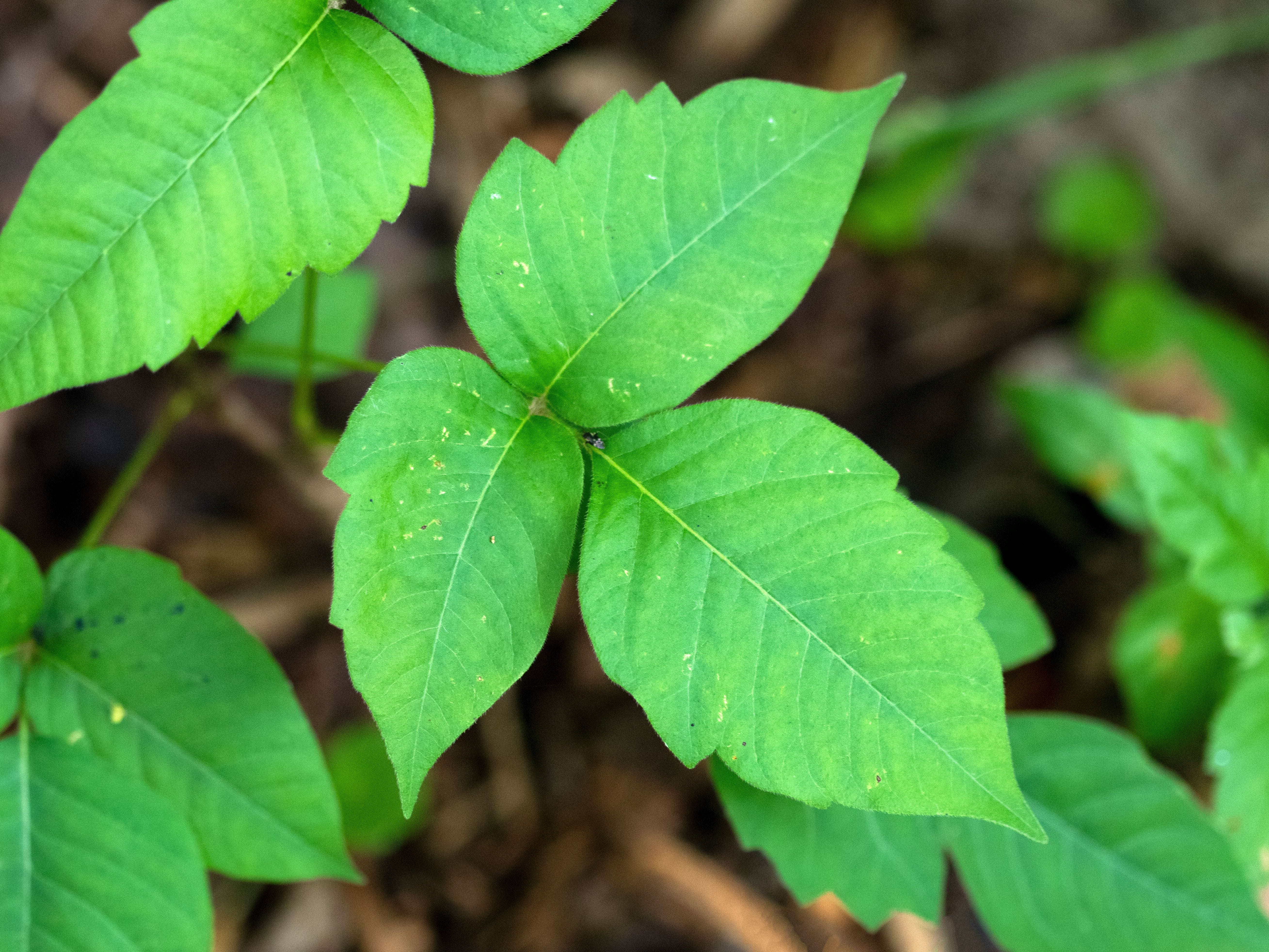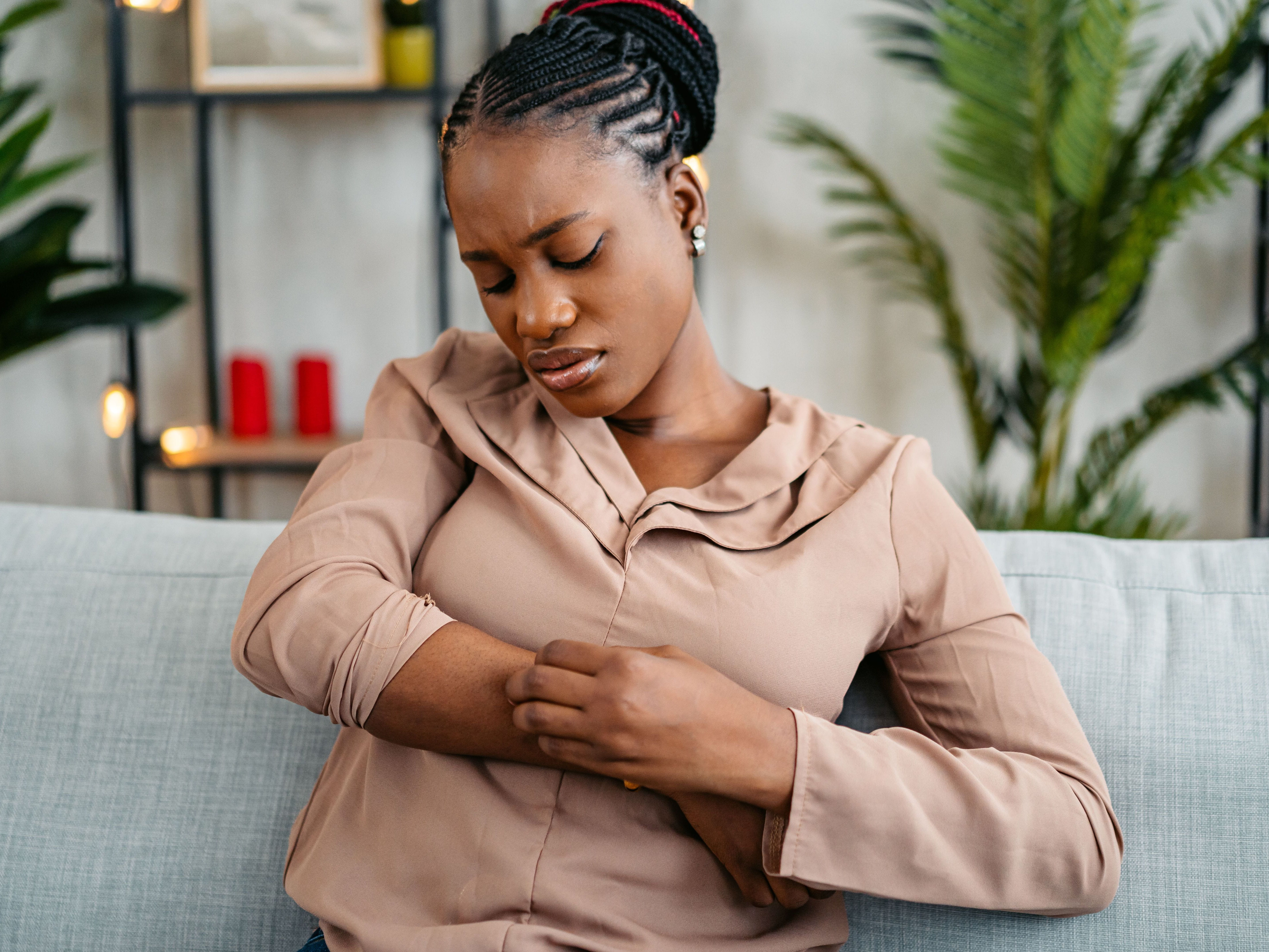Poison Ivy: Diagnosis, Treatment, and When to Seek Help

The Bottom Line
Poison ivy can cause a rash if someone touches it, which is caused by oils in the plant. The rash can be severe enough to blister and itch for days or weeks. Most cases can be managed at home. Severe cases require medical attention. If these plants are burned, inhaling the smoke can cause severe breathing problems.

What does poison ivy look like?
Poison ivy is found throughout much of North America as a vine or small shrub. It usually has leaves in groups of 3, leading to the adage, “Leaves of three, let it be.” The poison ivy vine will often produce yellow-green flowers and white or off-white berries in the spring and early fall. Its spring shoots are often red, and its leaves turn red or yellow in the fall.How does poison ivy work?
Poison ivy contains an oil called urushiol (pronounced "you-ROO-shee-all"), which is found in every part of the plant, especially the leaves and stems. Even when dried up, the leaves and stems still contain urushiol. Burning the leaves and stems can release urushiol in the smoke.Identifying a poison ivy rash
When most people come into contact with urushiol, the skin rapidly absorbs it and an allergic-type reaction occurs. Intense itchiness and a rash can develop in as few as 1–2 days after exposure in people who have had a reaction to poison ivy before. For people who have not experienced a previous reaction, the onset of symptoms can occur as late as 2 weeks after exposure. The itchiness and rash are often followed by the development of red bumps (papules) and fluid-filled blisters. The diagnosis of a poison ivy rash is usually made by the combination of its typical appearance and a history of likely exposure.Is everyone allergic to poison ivy?
It is estimated that 50–75% of people will develop the rash and other symptoms after contact with poison ivy. Those who do not develop symptoms are likely not sensitive to urushiol There are many cases of people who have had skin exposure to poison ivy but have not developed a rash or reaction. Everyone should treat poison ivy with respect (and distance).Is poison ivy contagious?
While possible, direct person-to-person spread of poison ivy is unlikely unless it occurs immediately. This is because of the rapid absorption of urushiol through human skin. Another person’s clothing, however, can spread urushiol until they have been washed. Contact with the fluid from poison ivy blisters will not cause another person to develop a poison ivy reaction.
Pets may also spread poison ivy if they have been exposed on their fur and the person pets them. If you know your pet has been in poison ivy, wash them well with soap and water to remove the oils. Wear gloves, long pants, and long sleeves to protect yourself while you bathe them. Dogs and cats are generally protected from poison ivy by their fur, but it is possible for them to develop a rash if the oil gets directly onto their skin.
How long does it take for a poison ivy rash to go away?
The reaction takes several weeks to go away. During this time, the poison ivy sufferer can be pretty miserable.
I was exposed to poison ivy: what should I do?
As soon as possible, do the following:
- Remove all clothing and set them aside where no one will touch them. While urushiol is rapidly absorbed through the skin, it can stay on clothing, objects, and pet fur for a very long time.
- Shower thoroughly with soap and water. Be sure to clean under the fingernails.
- Use tongs or a similar tool to put your clothing into a washing machine and run them through a full cycle with warm water and detergent.
- While wearing disposable gloves, wash any objects (tools, backpacks, golf clubs, etc.) and any pets that might have been exposed.
Treating a rash from poison ivy
Antihistamines like Benadryl used to be recommended for poison ivy reactions. However, recent research has determined that the reaction doesn’t involve histamine and that antihistamines are therefore ineffective. Instead, try the following:
- Avoid scratching, as scratching can cause an infection.
- If blisters form, leave them alone. Do not remove the loose skin from open blisters, as the skin can protect the wound underneath and help prevent infection.
- Short, lukewarm baths or cool showers can help soothe the itching. Avoid hot baths and showers, as they can worsen the itch.
- Topical products such as colloidal oatmeal baths (Aveeno), calamine lotion, or hydrocortisone cream might help reduce itching.
- Cool compresses made from a wet washcloth and applied directly to the itchy rash might help.
- Do not apply an antihistamine cream or lotion to your skin; this can worsen the rash.
- See your doctor if the rash covers a large area or if you can't control the itching.
Prescription-strength corticosteroids like oral prednisone or topical hydrocortisone can be beneficial if used early, especially if started before the formation of papules or blisters. Over-the-counter topical corticosteroid products are not strong enough.
One eventual hope for the poison ivy sufferer is that there have been efforts to develop a vaccine that might prevent or reduce the symptoms. When, or if, this vaccine might be available is unknown.
How to safely kill poison ivy
Poison ivy is hard to fully eliminate. Ideally, the plant should be pulled up and disposed of, but this is hard to do without touching it. Wearing disposable latex gloves can provide some protection. Broad-spectrum weed killers like glyphosate (Roundup) will kill poison ivy plants, but remember that the dead plant material is still loaded with urushiol.
Do not burn poison ivy plants. Burning releases urushiol into the air and can result in skin exposure and severe lung reactions. Firefighters and forest management personnel frequently develop reactions to urushiol carried by smoke particles.
When to seek expert help for a poison ivy rash
Contact your healthcare provider if any of the following occur:
- The reaction is severe or widespread.
- Your skin continues to swell.
- The rash affects your eyes, mouth, or genitals.
- Blisters are oozing pus.
- You develop a fever greater than 100°F (37.8°C).
- The rash does not get better within a few weeks.
- Seek emergency medical treatment if you have inhaled smoke from burning poison ivy and are having breathing difficulty.
If you are having a severe reaction to poison ivy or have questions about an exposure, get help online with the webPOISONCONTROL tool or call 1-800-222-1222. Both options are free for the public, and available 24 hours a day.
Certified Specialist in Poison Information
Revised William G. Troutman, PharmD
Professor of Pharmacy Emeritus
Poison Control Media Information
Did you find this page helpful? If so, we need your support. Poison Control is in constant competition with misinformation online. Links to www.poison.org or our webPOISONCONTROL triage tool from other websites and blogs help internet searchers quickly find accurate information and Poison Control’s contact information in an emergency. If you use the content from this page, please provide attribution via a link back to this page, www.poison.org, or https://triage.webpoisoncontrol.org/#!/exclusions. By doing so, you could save a life. Thank you!
Poisoned?
Call 1-800-222-1222 or
Prevention Tips
- Learn to identify and avoid poison ivy plants. Remember: "Leaves of three, let it be."
- Remove poison ivy plants from yards and other areas where children might contact them.
- When hiking or camping outdoors, wear closed-toed shoes and long pants and sleeves to reduce the amount of bare skin exposed.
- Keep pets leashed while in areas known to be infested with poison ivy.
This Really Happened
A woman was exposed to poison ivy while gardening and pulling up weeds at her father's home. She was wearing gloves, but her arms and legs were bare. Three days later, she developed an itchy rash on her arms. By the fifth day, the rash had worsened and fluid-filled blisters developed. She tried to treat the painful, itchy rash at home with Caladryl lotion (containing calamine and diphenhydramine) and ice.
Twelve days after the exposure, she called Poison Control. She was told to seek medical evaluation because her rash was severe and her attempts at self-treatment didn't help. The woman was evaluated at an urgent care clinic the following day and prescribed an oral corticosteroid. The corticosteroid helped to reduce the itching, and her rash improved a few days later.
For More Information
Poison ivy rash. Mayo Clinic. May 15, 2024. Accessed August 17, 2024.
Poisonous plants. National Institute for Occupational Health and Safety. Accessed August 20, 2024.
Weinberg L, Malani PN. Poison ivy, poison oak, and poison sumac. JAMA. 2024;331(21):1872.
References
Boelman DJ. Emergency: treating poison ivy, oak, and sumac. Am J Nursing. 2010; 110(6):49-52.
Poisoned?
Call 1-800-222-1222 or
Prevention Tips
- Learn to identify and avoid poison ivy plants. Remember: "Leaves of three, let it be."
- Remove poison ivy plants from yards and other areas where children might contact them.
- When hiking or camping outdoors, wear closed-toed shoes and long pants and sleeves to reduce the amount of bare skin exposed.
- Keep pets leashed while in areas known to be infested with poison ivy.
This Really Happened
A woman was exposed to poison ivy while gardening and pulling up weeds at her father's home. She was wearing gloves, but her arms and legs were bare. Three days later, she developed an itchy rash on her arms. By the fifth day, the rash had worsened and fluid-filled blisters developed. She tried to treat the painful, itchy rash at home with Caladryl lotion (containing calamine and diphenhydramine) and ice.
Twelve days after the exposure, she called Poison Control. She was told to seek medical evaluation because her rash was severe and her attempts at self-treatment didn't help. The woman was evaluated at an urgent care clinic the following day and prescribed an oral corticosteroid. The corticosteroid helped to reduce the itching, and her rash improved a few days later.
